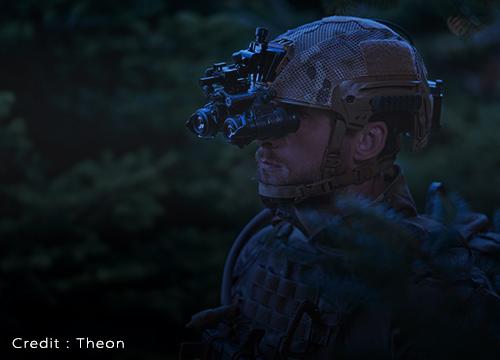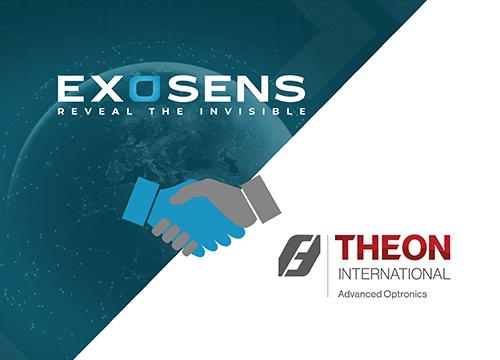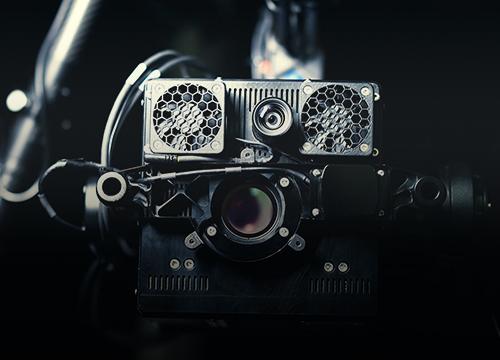How infrared cameras can help in fighting against viral pandemic
In a pandemic, the world is looking for solutions that provide quick, preliminary screening for large groups at critical spots such as airports, train stations, company entrances, schools, government sites and others. The goal is to improve efficiency by focusing on more thorough and accurate testing techniques, on the most relevant people: the ones with the highest probability of infection. Xenics thermal cameras can help in this first pass screening.
Screening usually means the detection of symptoms. Even if it is not always the case, especially with asymptomatic forms of the disease, fever is a good indicator. Detecting fever or the suspicion of fever is thus a good way to identify targets for secondary testing. In this view, a thermal camera enabling us to look at the temperature of the human body is thus an interesting tool: it can be used to detect people having elevated body temperature, which potentially means fever.
In high traffic environments (airports, schools, business campuses) it is important to find a way to quickly scan and identify potential targets for secondary screening. In these cases, Xenics thermal cameras such as the Gobi+ provide a good essential component for implementing that first pass fast screening and can be used for fever, or elevated body/face temperature detection.
Fig 1. Gobi+ camera (https://www.xenics.com/long-wave-infrared-imagers/gobi-640-series/)
How it works:
A thermal camera detects the heat emitted by persons or objects and can thus display a temperature map of them. In the sample below, human skin appears “lighter” or warmer than cooler clothing.
Fig 2. Human skin appears “lighter” or warmer than cooler clothing.
However, it is important to notice that a thermal camera cannot detect virus or infection. There could be several reasons leading to higher than normal body temperature not related to infection by a virus and some infected people do not have any fever. Moreover, uncooled long wave (LWIR) thermal cameras alone cannot measure the absolute temperature of a person with a high enough level of accuracy for detecting fever.
Screening procedures utilizing thermal camera technology are a powerful initial tool in detecting a possible infection. While they are a fast way to screen for anyone who might be contaminated by a virus, they are not 100% reliable and must always be followed up with further testing.
Elevated body temperature fast screening system consists in three main parts:
- The camera and its related components: lens and camera software. With proven expertise in IR cameras, Xenics can provide the Gobi+ uncooled thermal camera with suitable lenses. Software enabling thermal image reconstruction is also provided. For an easy integration in the global screening system, all Xenics products are GenICamTM
- Temperature calibration pack: This key element, embedded in the camera, participates on the global accuracy of the system. It gives a first estimation of absolute temperature value by translating the sensor pixel values into temperature information. This calibration is to be performed with the mounted lens to also include any lens bias contribution to the measurement. The typical radiometric accuracy for Gobi+ camera from Xenics including its lens is +/-2°C for positive temperatures up to 100°C and 2% for higher temperatures for operating ambient temperature of 25°C to 50°C. These tolerances are similar for all high performance IR based thermal cameras available on the market. Lower cost solutions provide +/-5°C accuracy.
- High level software for face recognition, tracking, alarm…: this is the global system software that perform the screening itself. This software layer is developed by the system designer and manufacturer such as Nevis Co., Ltd. or Flanders Make (https://www.youtube.com/watch?v=jUQid_IGHTY).
Fig 3. Nevis Co., Ltd. global screening system used for schools, companies, churches and special events (http://www.nevis.com.tw/newsDetail.asp?id=73)
The screening process is done by observing people with the thermal camera. As previously mentioned, an uncooled LWIR camera cannot measure human absolute temperature better than typically +/- 2°C. How should a system work to improve this accuracy so that elevated human temperature detection becomes possible?
It all comes from additional temperature references. One (preferably two) accurate temperature reference is placed in the field of view with temperatures close to the people or group of people to be analysed. Measuring the relative temperature difference between people and the temperature reference improves significatively the accuracy. Indeed, if the temperature of the reference is close enough (few °C) to the temperature to analyse, a linear interpolation can give a +/-0,15°C accuracy: this is now within the range for detecting people with higher than usual body temperature.
As a camera manufacturer, Xenics does not supply temperature reference (blackbodies), however, with its deep knowledge in thermal imagery, Xenics can help in defining characteristics of proper temperature references for this application.
Fig 4. Body temperature screening with a Gobi+ and one reference temperature (Blackbody) in the field of view.
It is then possible to screen people for elevated temperature. To optimize the detection process, systems usually checked the corner of individuals’ eyes as temperature of this point if close to the core temperature.
Fig 5. Human body temperature measurement.
After initial screening, people that trigger the alarm will then go for further measurement including medical thermometers.
Several systems worldwide are already based on Xenics cameras for human body temperature screening. As this technique is fast and cost effective, it is used in a proactive way in airports, schools, churches, shopping centres, corporate campuses, etc. Moreover, this passive technique induces nearly no disturbance for people, it can thus be used as a standard tool, even after the health crisis peak period, to safely monitor the recovery process.




